
Featured Blog | This community-written post highlights the best of what the game industry has to offer. Read more like it on the Game Developer Blogs.
So, I’ve been spending time corresponding with the kind folks who replied to my ‘call for Steam data’. This is the first in a series of columns exposing some of that data - or interviewing folks anonymously about their experiences.

So, I’ve been spending time corresponding with the kind folks who replied to my ‘call for Steam data’. This is the first in a series of columns exposing some of that data - or interviewing folks anonymously about their experiences.
In this case, the developer at Bad Logic Studios has been generous enough to share full Steam stats with us. I think it’s an interesting look at ‘the other side’ of Steam - well made hobbyist or semi-pro games that don’t break out, despite being functional and decent quality.
I was talking to Thomas Bidaux, and we speculated wildly that 50%-70% of all Steam games don’t sell more than 1,000 copies during their life time. But we rarely see the back end data regarding them. So here it is, followed by an interview with the dev in question.
Firstly, here’s total sales for Bad Logic’s games:

Yes, that’s less than 500 copies sold across all three titles. And no, we’re not shaming Bad Logic for this. This is something that happens to a LOT of smaller Steam game devs, just doesn’t get discussed much.
It’s like releasing a book on Kindle on the Amazon store. Just because it’s out there doesn’t mean it automatically sells X amount of copies. The more we can understand and be OK with this, the more we’ll all understand how much ‘hook’ knowledge, prep & community-building is needed to make a game successful.
Just to make sure we understand the type of games we’re talking about, here’s a drilldown on release dates and links and screenshots of each:
Fortune & Gloria (Regular cost - $9.99. Steam page live: 1 July 2018 ; Launch Day: 24 July 2018)
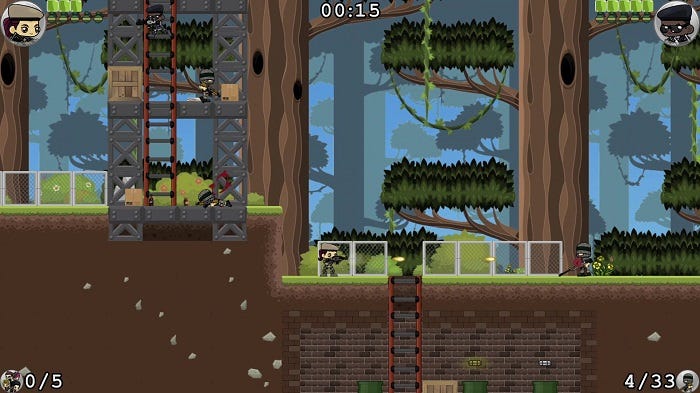
Pirate Island Rescue (Regular cost: $2.99. Steam page live: 27 August 2018 ; Launch Day: 19 September 2018)

Steampunk Graveyard (Regular cost: $2.99. Steam page live: 3 October 2018 ; Launch Day: 26 October 2018)
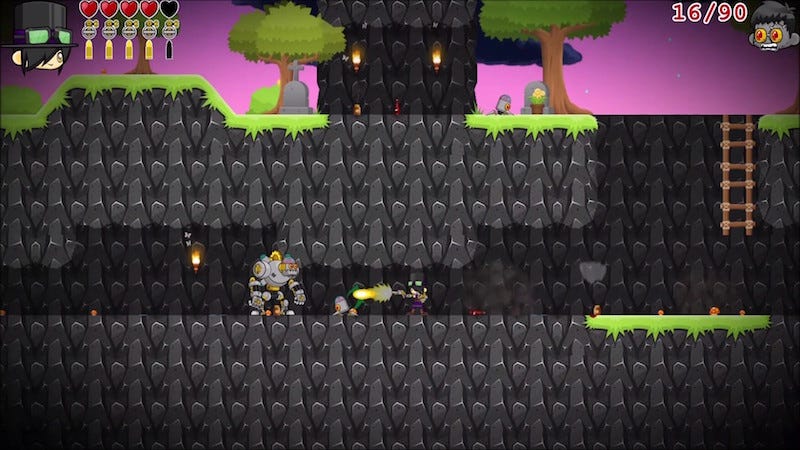
So yes, these are side-scrolling platformers using artist contracted/edited art. But they’re reasonably executed, and actually, Fortune & Gloria has procedurally generated levels, which is one of the things I often recommend to devs.
Next, here’s the wishlist history and balance for all of Bad Logic Studio’s games:
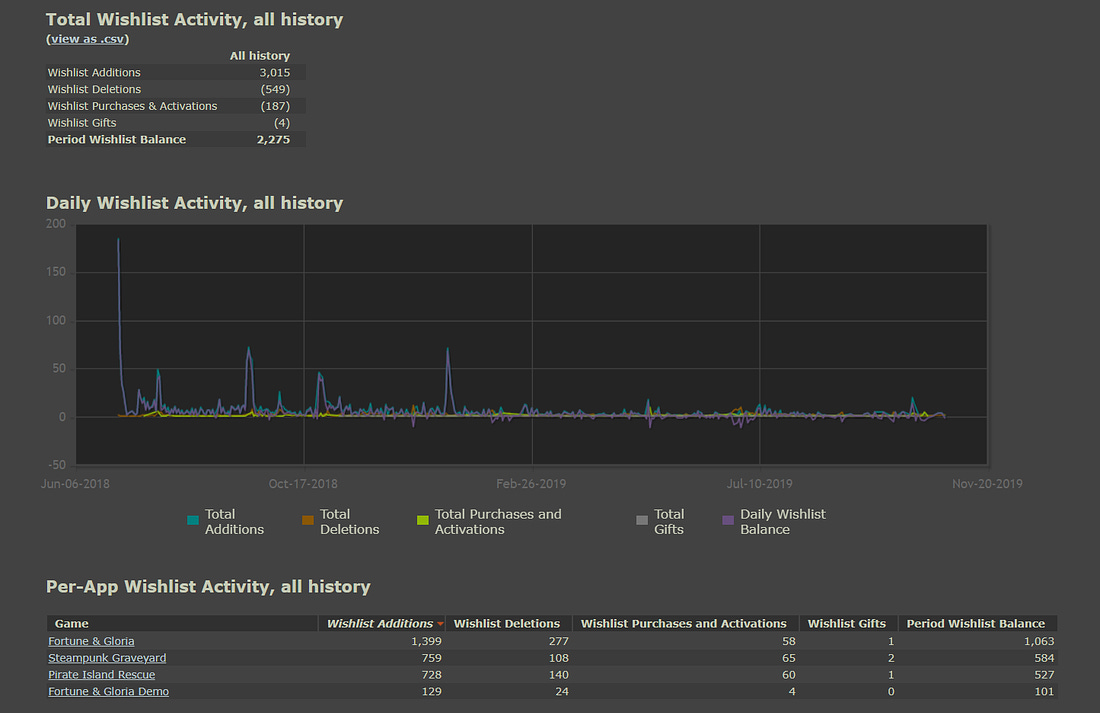
We also have the wishlist numbers on release for each of the games:
Fortune & Gloria - 531 wishlists on launch day (Steam page live: 1 July 2018. Launch Day: 24 July 2018) Current wishlists: 1,063
Pirate Island Rescue - 302 wishlists on launch day (Steam page live: 27 August 2018. Launch Day: 19 September 2018) Current wishlists: 527
Steampunk Graveyard - 89 wishlists on launch day (Steam page live: 3 October 2018 Launch Day: 26 October 2018) Current wishlists: 584
Thought this was interesting - seems like Steam wishlists on lower-end games don’t always go up as much after release as on mid-level games.
(I would expect wishlists to at least triple, and sometimes as high as 10x or more after release, for games that sell better. But then Steampunk Graveyard did do a decent multiple, just from a tiny base - maybe due to the word ‘Steampunk’ in it?)
We can also get a look at how Steam sales affect games - here’s Fortune & Gloria, for example:
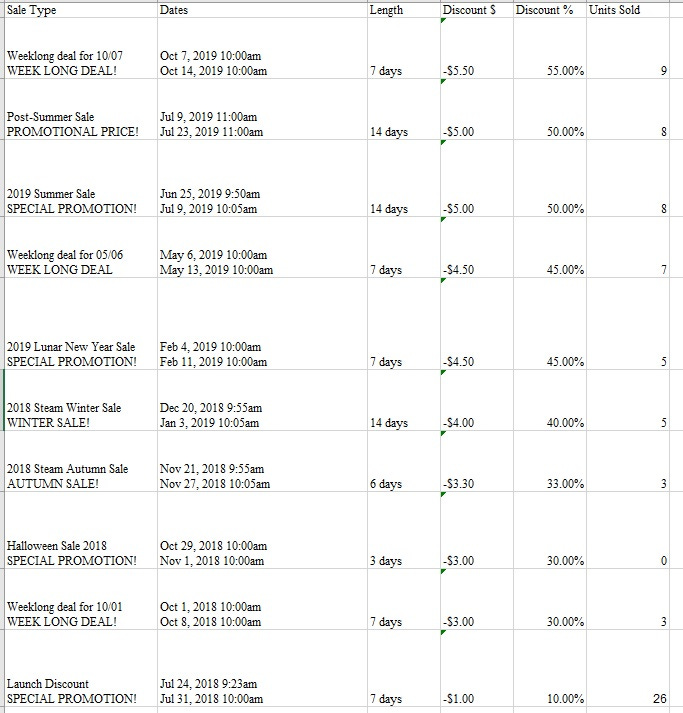
In this particular case, 49 of the 106 sales for Fortune & Gloria have come during a Steam sale of some kind, and an additional 26 sales during the launch discount. So on the lower end, larger (30%-50%) discounts seem to move a fairly large % of copies of your game.
Finally, here’s the regional breakdown of sales for all Bad Logic games, which were translated into 15 languages (at least in-game):

And also the country breakdown of lifetime sales for Fortune & Gloria:
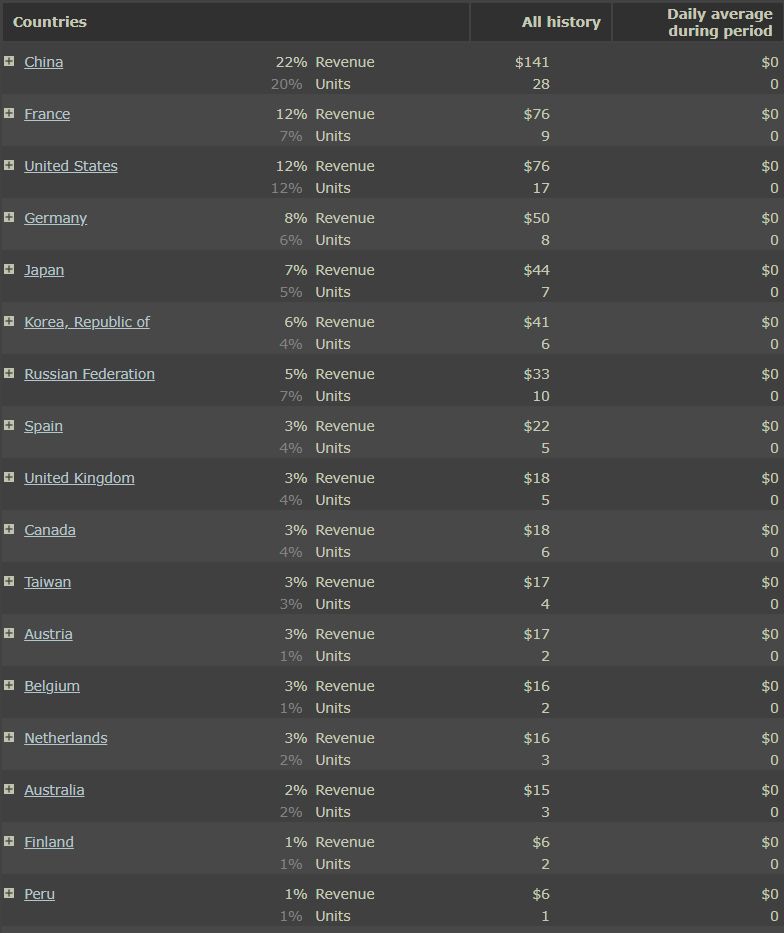
And then the same lifetime country breakdown for Steampunk Graveyard:
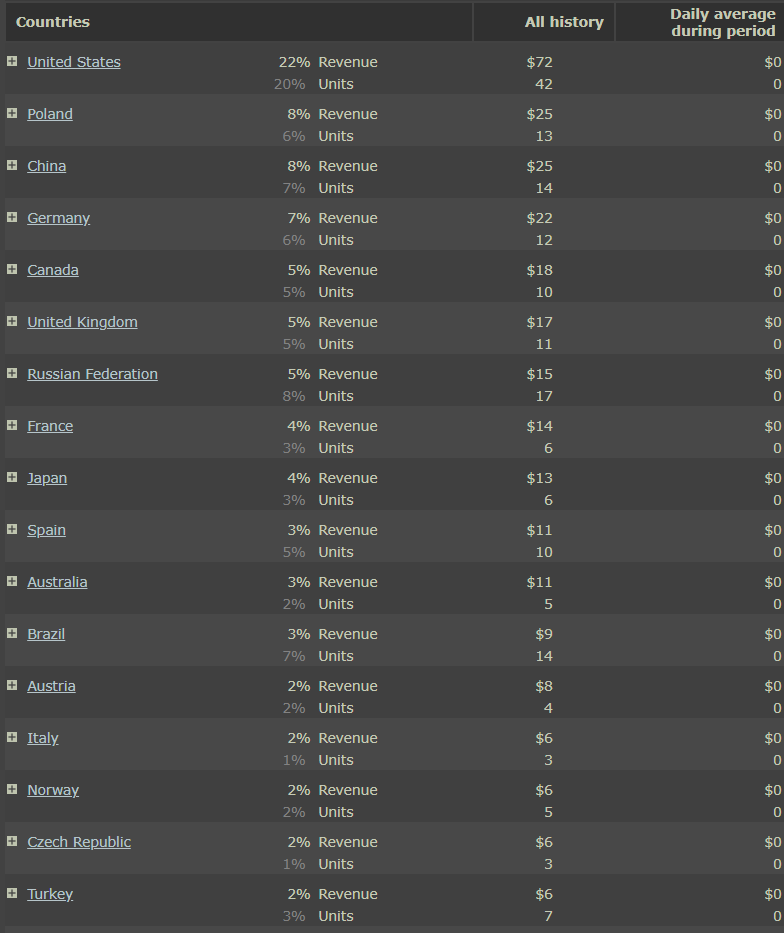
(Interestingly, country-based sales for the two are quite different! But the sample sizes are relatively small, of course. The one for Steampunk Graveyard looks more ‘normal’ as to what I’d expected for a larger-selling title that was localized in some way.)
Finally, to round off this piece, here’s an interview with the Bad Logic Studios developer himself, explaining his goal in launching his games and his current view on the market:
Q: Tell us a little (abstractly) about the background for you making these games.
A: I've wanted to make a game that I could call my own for a while. My day job is working on fairly large RTS games for a small Canadian studio, and as much as I like them those are really their games not mine.
I didn't even know if I could find the time for my more ambitious project ideas given the hours I worked (I work remotely from the UK) and having a young daughter to look after, so I set myself a challenge to make a small but complete game within a year and with a minimal budget. If I could make that, then I would consider doing something bigger.
I'm primarily a coder, so I saw the first game (Fortune & Gloria) as an opportunity to consider different aspects of game development and look at sourcing things I couldn't do myself like art, sound, music, voice acting and localization.
This would also allow me to learn about the ins and outs of the Steam backend as, despite having three games released on Steam prior to this, I hadn't worked on that side of things before since it was always handled by someone else on the team.
For the second (Pirate Island Rescue) and third (Steampunk Graveyard) games, I wanted to play around with different themes and see how games do at a lower price point.
Q: Did you decide to do any research on the type of games that do well on Steam before making these, or was it more of a 'make what i want to make' type situation?
A: For these small games, it was more about picking a genre of game that I liked, that was completely different to what I do for my day job, and one that would be suitable for a game that would be bit on the small side.
If I had done the research, I probably wouldn't have gone with an action platformer game. Don't get me wrong, there are definitely some great games in the genre that have succeeded, its just that it seems like every developer and their dog have made an action platformer at some point, so there is a lot of competition and it's hard to stand out.
Q: How do you think people ended up finding out about the games you made?
A: It has definitely been through Steam itself. The marketing I did was very minimal, mostly just some tweets and a few press releases, and the engagement from that was dwarfed by the impressions I got on Steam in the first week of release.
That's the wrong way around though if you want people to buy your game. People really need to have heard of your game before they see it on Steam, otherwise they will get distracted by everything else on offer and forget your game.
Q: How did you decide on the pricing you ended up picking?
A: I was wavering on price for a while, but I had seen a few devs talk about games being priced too low, so for the first game I decided I would go with the maximum price I thought someone might pay for a game this size without being ridiculous [$9.99 USD or local equivalents].
For the second and third games, I wanted to see if a lower price point would generate enough sales to match the income of the first game, so I went for the lowest price that could still have worthwhile discounts. [$2.99 USD or local equivalents.]
Q: Are you happy with the resulting sales numbers?
A: If I was solely relying on these games for my income I would not be happy, but given the level of marketing and that these were side projects I wanted to learn from, I was happy that I sold anything at all and even happier when I sold enough to cover my small financial outlay.
Q: Did you think there would be more organic daily sales outside of Steam sales?
A: From my experience in my day job, I knew that even with bigger and more heavily promoted games the majority of purchases are made when there is a discount. So scaling that down for games with minimal promotion I wasn't expecting many organic daily sales at all and that is one of the reasons why the games were on sale so often.
Q: Would you have done anything differently when making these types of games again?
A: With the games themselves there are more features I would have liked to have included, but they wouldn't have necessarily made the games any more successful.
I would definitely do more research into the marketability of the games in the pre-development stage and do more promotion during development to build up wishlists and followers to give the game a better launch.
Q: Have you got any lessons for people who would like to make games on Steam?
A: Don't put an ampersand (&) in your game's title! It messed up so many things on Steam's backend and on other websites that get info from Steam. It was a pain to fix things and some things are still a little broken.
More seriously, promote your game outside of Steam, even if it's just raising awareness that it exists. Most of the places your game is listed on Steam it's just a small capsule image that doesn't show much more than your logo, so when people see it they need to be able to go "Oh, yeah, I've heard of that game" and click on it to check it out, otherwise they are clicking on something else that they have heard of before instead.
Also, opt into as many of the seasonal sales events as you can, and do a weeklong or custom sale in between those events, that's when you'll get most people buying your game. Don't rush your discounts, though, step them up gradually and price your game so that you can discount and still get a decent return.
—
So to conclude, I’d like to thank the Bad Logic Studios developer VERY much for being willing to be so transparent with us. Though at a smaller scale, the stats largely mirror discussions we’ve had in this newsletter before.
To whit: if you do want to sell copies of your game, you need interest & wishlists ahead of time. In order to do that, you need a unique value proposition and external community interest ahead of time.
It’s fine if you’re a hobbyist or just trying stuff out - and you’re fine with selling this number of copies of a game. But please be aware that if you do nothing/little in advance of release, you MAY sell this amount of copies of your game(s). And if you’re trying to do this full-time, that’ll… probably be bad news?
[You've been reading Game Discoverability Now!, a regular look at how people find - and buy - your video games. Or don’t. You may know me from helping to run GDC & the Independent Games Festival, and advising indie publisher No More Robots, or from my other newsletter Video Game Deep Cuts.]
Read more about:
Featured BlogsAbout the Author(s)
You May Also Like









